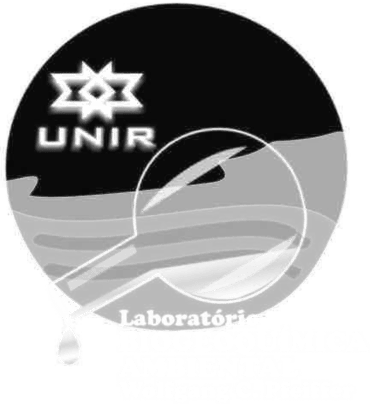Publicações 2019
Hg accumulation, Amazon, Madeira River Basin, Puruzinho Lake, Aquatic ecosystems, Human reproductive health, Impact of hydroelectric, Neurodevelopment and Hg, River-floodplain, Influence of seasonality, Marine turtle, Spatial Analysis of Mercury
ARTIGOS & PERIÓDICOS
Influence of the flood pulse on mercury accumulation in detritivorous, herbivorous and omnivorous fish in Brazilian Amazonia
Lucas Silva Azevedo · Inácio Abreu Pestana · Adriely Ferreira da Costa Nery · Wanderley Rodrigues Bastos · Cristina Maria Magalhães Souza
Abstract: Hg accumulation in fish is influenced by several factors including seasonality. In the Amazon, ecosystems are marked by strong seasonal variation in precipitation, which leads to drastic changes in the water level of lakes and rivers. The aim of this study was to evaluate Hg levels in muscle of detritivorous, herbivorous and omnivorous fish from an Amazon lake (Madeira River Basin, Amazonas, Brazil) over four seasons (rising water, high water, falling water and low water). We hypothesized that total Hg concentration varies during the seasons. The results indicate that total Hg levels in detritivorous fish were higher in rising and low water seasons while in herbivorous and omnivorous fish the total Hg concentration was higher during the rising water season. The hypothesis was supported by the results. Additionally, the study provides evidence that Hg levels in fish with different feeding habits are influenced by the flood pulse of the Amazon region.
Variation in Hg accumulation between demersal and pelagic fish from Puruzinho Lake, Brazilian Amazon
Lucas Silva Azevedo · Inácio Abreu Pestana · Adriely Ferreira da Costa Nery · Wanderley Rodrigues Bastos · Cristina Maria Magalhães Souza
Abstract: Aquatic ecosystems in the Amazon are exposed to mercury, mostly from natural sources. Hg accumulation in fish tissues poses a risk to the local population since fish is one of the main sources of protein in the region. The aim of this study was to evaluate Hg distribution in demersal and pelagic carnivorous fish between seasons in Puruzinho Lake in the Brazilian Amazon. Total Hg was quantified in 221 individuals of 8 species obtained during the high water and low water seasons. Two-way ANOVA indicated an interaction between foraging habitat and season. During high water, total Hg concentrations were similar between demersal and pelagic fish, while in low water, total Hg levels were higher in demersal fish. Pelagic and demersal fishes’ Hg levels were similar between the two seasons.
Exposure to mercury and human reproductive health: A systematic review
Magda Carvalho Henriques, Susana Loureiro, Margarida Fardilha, Maria Teresa Herdeiro
Abstract: Background: Evidences from human and animal studies suggest that reproductive function may be affected by mercury. The aim of this review was to explore the mercury influence on human fertility. Methods: A systematic search was made in PubMED for papers published between 1975–2017, according to the Preferred Reporting Items for Systematic Reviews and Meta-Analyses guidelines. Results: Increased mercury levels were associated with infertility or subfertility status. Further, infertile subjects with unexplained infertility showed higher levels of mercury in hair, blood and urine than fertile ones. Mercury exposure induced sperm DNA damage and abnormal sperm morphology and motility. Additionally, mercury levels were related with higher incidence of menstrual and hormonal disorders and increased rates of adverse reproductive outcomes. Conclusions: Our review showed that mercury negatively impacts human reproduction, affecting the reproductive and endocrine systems in both male and female. However, the molecular mechanisms underlying the mercury-associated decline on fertility remains unknown.
The impact of hydroelectric dams on mercury dynamics in South America: A review
Inácio Abreu Pestana, Lucas Silva Azevedo, Wanderley Rodrigues Bastos, Cristina Maria Magalhães de Souza
Abstract: The increase in global demand for electric energy is reflected in plans to construct numerous hydro-electric dams in South America that can cause chronic ecological impacts if not built and managed correctly. One of the main impacts generated by hydropower dams is the accumulation of Hg chemical species in their reservoir compartments and the downstream transport of these contaminants. Hg circulation in these environments has been studied for 27 years and this review brings a synthesis of the dynamics that are now well established, so that future studies can focus on gaps and inconsistent results in the literature. The topics cover the methylation process of Hg, its transfer along the trophic chain and the impacts downstream from dams. In addition, meta-analyses are used to propose regression models that explain Hg dispersion in environmental compartments of reservoirs, using as predictors morphological, spatial and temporal aspects of these environments.
Data relating neurodevelopment of exclusively breastfed children of urban mothers and pre- and post-natal mercury exposure
Rejane Correa Marques, Jose G. Dórea, José Vicente Elias Bernardi, Wanderley Rodrigues Bastos, Olaf Malm
Abstract: A cohort of 100 exclusively breastfed children was formed to study association between neurodevelopment and Hg exposure [1]. Detailed questionnaires were administered by trained interviewers to the mothers, and measurements of early child development were collected at 6, 36 and 60 months by trained nurses and psychologists using the Gesell Developmental Schedules. The association between prenatal and postnatal organic Hg (methyl-Hg from fish consumption and ethyl-Hg from Thimerosalcontaining vaccine) exposures with Gesell scores of the four do- mains [Adaptive ability, Language development, Motor abilities (gross motor), and Personal-social ability] were studied in preschool children.
Total Hg and methylmercury dynamics in a river-floodplain system in the Western Amazon: Influence of seasonality, organic matter and physical and chemical parameters
Inacio A. Pestana, Marcelo G. Almeida, Wanderley R. Bastos, Cristina M.M. Souza
Graphical Abstract


Abstract: Total mercury (Hg) and methylmercury (MeHg) circulation in a connected river-floodplain system composed of two black water (a small forest river, igarapé, and Cuniã Lake) and a white water body (Madeira River), located in the Madeira River Basin were evaluated during the rising-water, early and late falling-water periods. We assessed organic matter (C and N composition, (C:N)α; and δ¹³C isotopic signature), and physical and chemical influences (pH, dissolved O2, electric conductivity) in relationship to Hg and MeHg concentrations. Hg and MeHg concentrations in a sediment profile and three aquatic macrophytes (E. crassipes, E. azuera and Oryza sp.) were measured. Igarapé and Cuniã Lake showed higher Hg and MeHg concentrations (115–709; 10–25 ng g⁻¹ ) in the suspended particulate matter compared (SPM) compared to the Madeira River (Hg: 5–16; MeHg: 0.2–0.3 ng g⁻¹), partially independent of seasonality (p = 0.06). Total Hg had higher affinity for the SPM (1.75 times) than for dissolved organic matter. Organic matter characteristics correlated with MeHg concentrations (δ¹³C and (C:N)α; r2 = 0.79; p < 0.0001), as well as physical and chemical parameters of the water column (dissolved O2 and pH; r2 = 0.80; p < 0.0001), demonstrating that physical and chemical changes between the river-floodplain system affect MeHg circulation and production. The inverse correlation of MeHg and SO4²⁻ concentrations (r2 = 0.73; p < 0.0001) suggests the action of sulfate-reducing bacteria. Total Hg and MeHg concentrations as well as %MeHg were detected in the sediment profile (Hg: 24–51; MeHg: 0.6–3.2 ng g⁻¹ ; %MeHg: 1.8–6.2) and aquatic macrophytes (Hg: 1–30; MeHg: −10.3–7.5 ng g ; %MeHg: 1.6–33.7). We conclude that the highest Hg and MeHg concentrations in Cuniã Lake, compared to the Madeira River, are due to the physical and chemical differences between these environments.
Mercury and methylmercury in carapace of the marine turtle Caretta caretta, in northeastern Brazil and its potential for environmental monitoring
César Augusto B. Rodriguez, Moises F. Bezerra, Carlos Eduardo de Rezende, Wanderley R. Bastos and Luiz D. de Lacerda
Abstract: The present work tests the use of carapace fragments of the marine turtle Caretta caretta as a tool for environmental biomonitoring of mercury (Hg) and to evaluate the influence of biological and ecological factors in Hg concentrations. Samples of carapace fragments were obtained during the nesting season of 2012 and 2016 and were analyzed for their total-Hg and methyl-Hg concentrations and the isotopic composition of carbon and nitrogen (δ¹⁵N and δ¹³C). Seventy-six females were sampled, with an average size of 87.1 to 107 cm of curved carapace length (CCL). The results showed a wide variation in total Hg concentrations (3.3 – 1,672 ng g⁻¹) and low concentrations of methyl-Hg, not showing any pattern of accumulation among the individuals. The isotopic composition of δ¹⁵N and δ¹³C suggests that the individuals sampled belong to a high trophic level but did not present any relationship with the Hg concentrations. It suggests that, at least with the existing results, and unlike other turtle species, carapace fragments of C. caretta cannot yet be used in environmental monitoring.
Spatial Analysis of Mercury Levels as Indicator of Environmental Changes and Soil Quality in Agroforestry Systems in Southern Amazon
Joiada Moreira da Silva Linhares, Wanderley Rodrigues Bastos, Ronaldo Almeida, Ângelo Gilberto Manzatto, Igor Bruno Barbosa de Holanda, Maria Cristina Recktenvald e Deborah Pereira Linhares da Silva
Abstract: An agroforestry system (AFS) describes the conjoint use of land for agricultural and forestry purposes. An AFS plays a strategic role in the mitigation of carbon dioxide (CO2) emissions, and stands as an alternative in land use that reduces mercury (Hg) remobilization in cultivated soils. This study evaluated the spatial variability of Hg concentrations as indicators of environment changes and soil quality in different land cover and use systems in a rural settlement in southern Amazon, Brazil. The methodological procedures were carried out as steps: the experimental units were defined, physical and chemical characteristics of soil samples were analyzed, and data were evaluated using conventional and spatial statistics. The AFS included had been established 10 years before or more, and had high Hg retention capacity , compared with Hg levels in soils on migratory agriculture or that are not fallowed . Therefore, due to low AFS improve soil quality due to the low intensity of harrowing, increasing retention of gaseous and particulate Hg in the soil.





